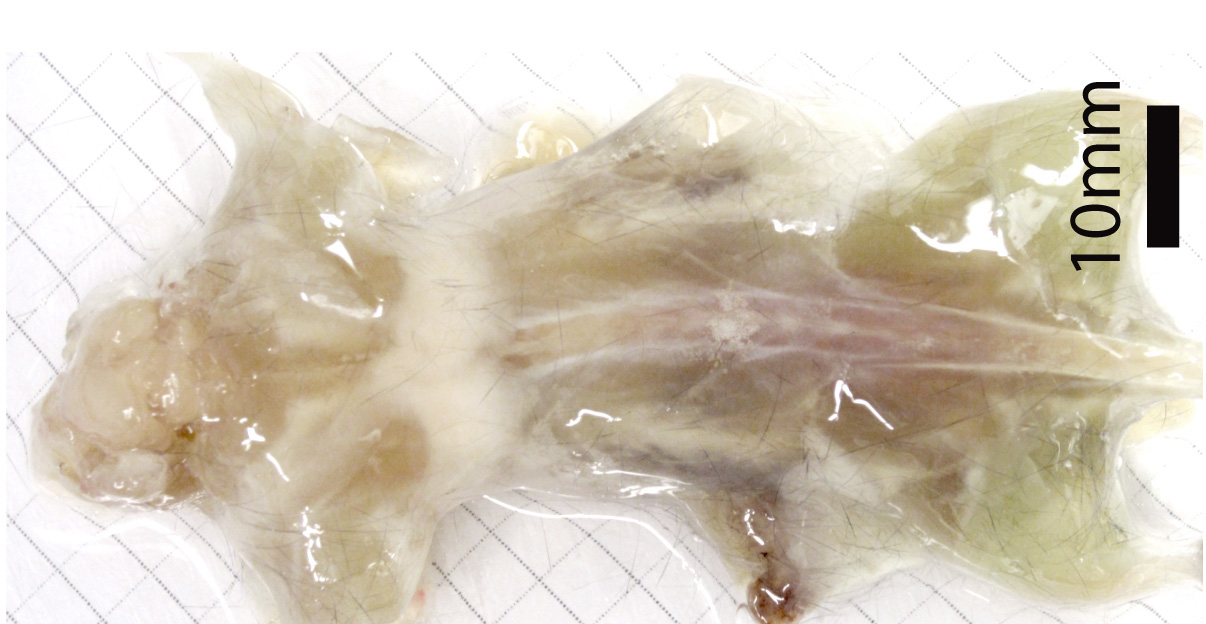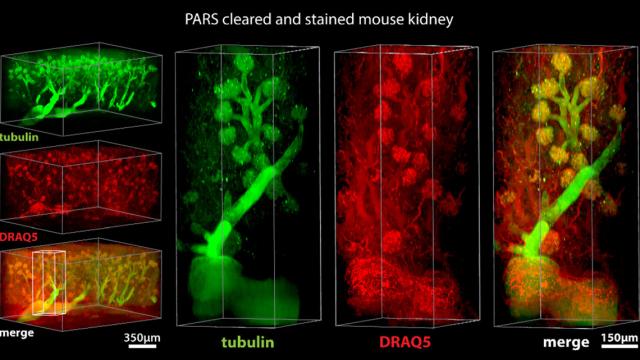Last year, scientists did the wacky and cool thing of making a mouse brain transparent. Now they have gone and done it to an entire mouse by pumping detergent through its veins. The transparent mouse looks like gross rodent jello (yes, there is a photo), but it’s also an incredible new way to study what intact organs look like on the inside.
The big problem with making any living tissue transparent is lipids, a class of molecules that includes fats and waxes and cholesterol. Lipids block light, but they’re also present all throughout the body.
Last April, New Scientist‘s Helen Thomson explains, neuroscientists at Stanford found a way to replace the lipids in a mouse brain with a transparent hydrogel called acrylamide. The brain was bathed in acrylamide and then placed in detergent, which slowly dissolves the lipids over time. An electric field speeds up the process.
This works fine when you have a tiny mouse brain, but acrylamide can’t penetrate every corner of a whole mouse and an electric field can damage tissue with heat. Viviana Gradinaru of the California Institute of Technology and her team tried a different tack: they took a dead mouse and pumped detergent through its circulatory system. They also skinned the mouse and removed its bones to get a better look. The whole detergent-dissolving process takes about two weeks, and the mouse ends up like this:

This puddle of mouse isn’t much to look at with the naked eye, but under a microscope, it reveals intact organs as we’ve never seen them before. Staining the transparent mouse would also let scientists visualise specific tissues or cells. The photo at the top of this post shows the microstructures of a kidney after it had been made transparent and then stained.
Visualising those kidney structures would have been more difficult using old techniques like slicing tissue and reconstructing it in 3D using a computer. Gradinaru tells
New Scientist they’re also working to map out the entire nervous system through the mouse’s body. The technique has also be applied to human tissue to look for cancerous cells in skin biopsies. The idea of a transparent mouse is flat out cool, but also holds so many possibilities for science. [Cell via New Scientist]
Pictures: Yang et al. Cell
